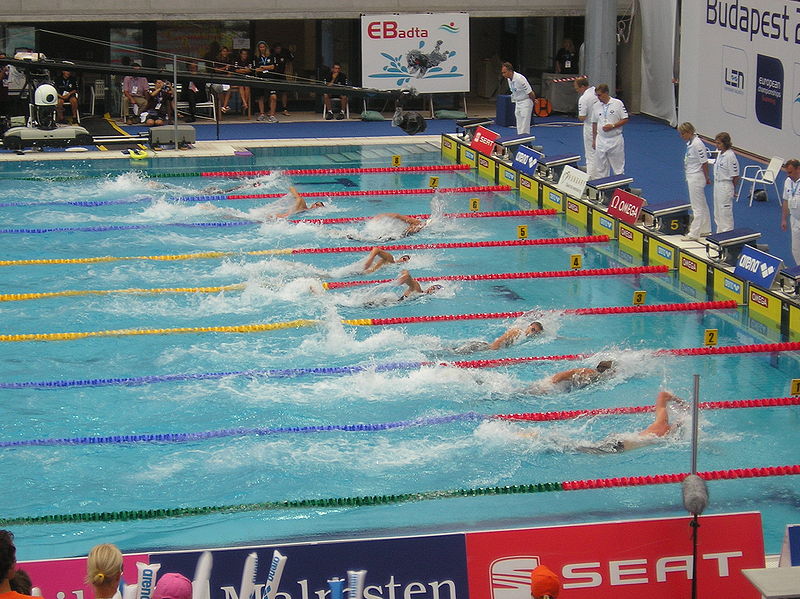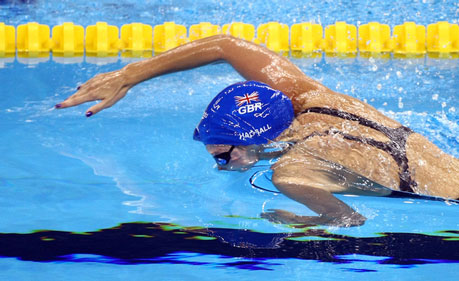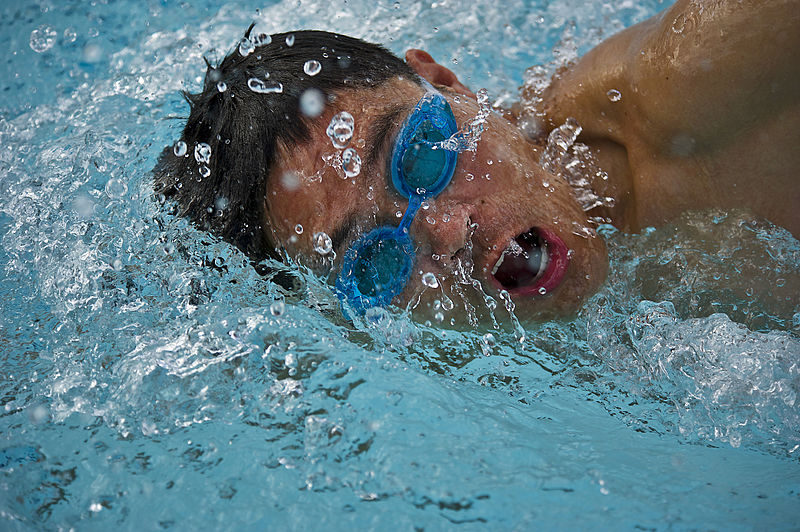You may not realise, but the stroke swimmers use in the freestyle event is actually called the ‘front crawl’. Freestyle means you can swim with any style you like- the fastest stroke just so happens to be the ‘front crawl’. Swimming is a great form of exercise, but many people who have not been taught to swim effectively at a young age can be put off by its technical nature. This article breaks down the fundamental parts of the front crawl to help you better understand and improve your swimming.
Hand Entry
This refers to the point of entry of your hand into the water. Ideally, your hand and fingers should be straight with your fingers entering first, nearly parallel to the angle of the water. This should create minimal splash and decrease drag. You should maintain this wrist angle as you glide through the water to initiate the catch.
The Catch
The catch refers to the point where you bend your hand and wrist in the water to begin pulling your hand back, to allow propulsion through the water. This is a crucial part of the stroke and one many people get wrong. When you bend your hand it should become directly perpendicular to the bottom of the pool.
The Pull
This occurs immediately after the catch and refers to pulling your hand back though the water to propel yourself forward. Imagine you were looking at yourself swimming from behind and you had a smiley face drawn on the palm of your hand. You should be able to see that face through the entire stroke until your hand exits the water. This allows for maximum grab of the water and will help keep your upright during your swim.
Body Roll
This refers to the way you twist your torso to aid with hand entry into the water. Keeping your neck straight, your torso should twist towards the side of the hand entering the water. This will help with hand positioning and entry and allow for a more powerful, efficient stroke.
The Kick
Swimmers tend to kick at various speeds and beginners should not worry too much about the specifics of the beat of their kick. The most important thing is that you kick smoothly with your toes pointed forwards (think tippy toes) and not too aggressively. A good kick will only contribute about to 10-20 per cent of your forward propulsion. If you are finding you have to kick hard to get from end to end of the pool, there are almost certainly deficiencies with your main stroke.
Breathing
Breathing is where a lot of beginners get into trouble. They panic because they begin to lose breath and their instinct is to put their head up and stop. If you can get a good grasp of the previous points about technique mentioned above, breathing will become automatically easier. Ideally, you should try to learn to breathe on both sides of your body and get your mouth in the little pocket of space just in front of your shoulder, known as the ‘bow wave’ (see below pic). A beginner should try to breathe every three to five stokes. The exhalation is just as important. This should be a slow steady breath over multiple stokes, through the nose to clear the lungs of all used air. This will also help with keeping you upright in the water, as the air in your lungs will not hold your torso higher in the water than your legs.
If you are still having trouble with your freestyle stoke checkout swimsmooth.com or talk to a health professional or coach who is familiar with swimming. Next week we will discuss five tips to help beginner swimmers.
About the Author:
Dr. Nicholas Tripodi is a Co-director and Osteopath at the Competitive Sports Clinic located in the Essendon District. Nicholas has particular interests in sports injuries, exercise rehabilitation and running and cycling analysis.



